Oct. 26, 2013 show
Environmental heritage across Indiana
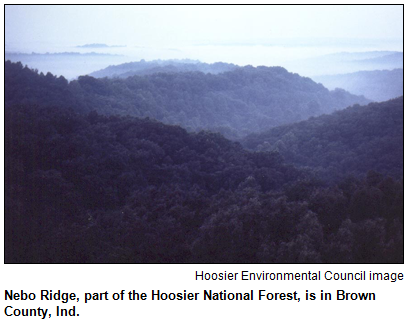 The way history has unfolded, maybe we should call this show "the good, the bad and the ugly."
The way history has unfolded, maybe we should call this show "the good, the bad and the ugly."
Early settlers in Indiana and subsequent generations clear-cut the dense, unbroken forest of towering trees that had dominated the Hoosier landscape, resulting in soil erosion and other significant challenges.
But, beginning with work during the Great Depression undertaken by the Civilian Conservation Corps, the Hoosier National Forest was recreated extensively in southern Indiana.
White River in the Indianapolis area has been substantially cleaned up, particularly when contrasted with its previous reputation as a dumping ground and a punch line for jokes. Many experts, though, consider the Grand Calumet River in northwestern Indiana still to be among the top 10 dirtiest in the country.
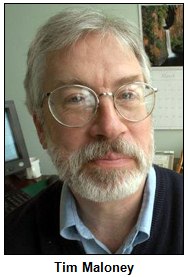 New hotels, businesses and buildings on university campuses in Indiana are winning acclaim for their energy-saving features. Concerns are increasing, though, about factory farms and their impact on nearby communities and havens such as Camp Tecumseh, a retreat near Monticello that has been beloved by generations of Hoosier youth.
New hotels, businesses and buildings on university campuses in Indiana are winning acclaim for their energy-saving features. Concerns are increasing, though, about factory farms and their impact on nearby communities and havens such as Camp Tecumseh, a retreat near Monticello that has been beloved by generations of Hoosier youth.
 To explore the state's environmental heritage, Nelson will be joined in studio by two guests from the Hoosier Environmental Council, a non-profit that is celebrating its 30th anniversary.
To explore the state's environmental heritage, Nelson will be joined in studio by two guests from the Hoosier Environmental Council, a non-profit that is celebrating its 30th anniversary.
The HEC, which describes itself as a "science-based advocacy organization dedicated to protecting Indiana's environment," will host one of the state's largest gatherings of environmentalists on Nov. 16 on the campus of Indiana University-Purdue University at Indianapolis.
Nelson's guests will be:
- Jesse Kharbanda, the dynamic former Rhodes Scholar who has been HEC's executive director since 2007. Known for his media savvy - Jesse has been a Nuvo Newsweekly cover subject and a familiar interviewee on TV and radio shows - he has emphasized ways that environmentalists can work in concert with business leaders and religious conservatives rather than being seen as perpetually at, well, loggerheads.
- Tim Maloney, HEC's senior policy director. He also has been the chair of Hoosier chapter of the Sierra Club; during the early 1980s, Tim helped found the HEC as a board member.
"A lot of what we're worried about today results from actions taken decades ago and generations ago," Jesse Kharbanda says, referring to what he and others call "legacy waste."
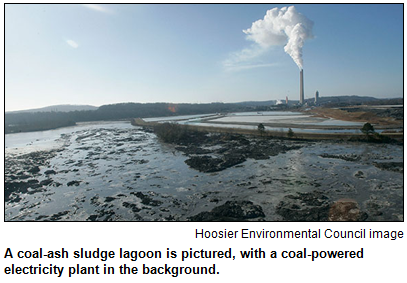 He also says: "Everyone cares about nature. They just care about different facets of it, in different ways, with different approaches to dealing with problems."
He also says: "Everyone cares about nature. They just care about different facets of it, in different ways, with different approaches to dealing with problems."
Specific areas of concern include Blackford County in northeastern Indiana, the site of several abandoned industrial complexes and former factories.
According to several accounts, the county and its county seat, Hartford City, have some of the highest levels of cancer, per person, in the state. The HEC launched a task force to coordinate investigations into the health issues and pollutants in the region, which once was home to automobile, gas, glass and chemical companies. In recent years, local residents have formed Blackford County Concerned Citizens, a grassroots organization that crusades for, as they put it, a "healthier and stronger future."
For the HEC, a galvanizing crusade after the organization was founded in 1983 involved attempts to stop expanded gas and oil leasing in parts of the Hoosier National Forest. The forest had been recreated by the CCC in the 1930s because extensive clear-cutting in Brown County and elsewhere in southern Indiana was causing significant environmental problems.
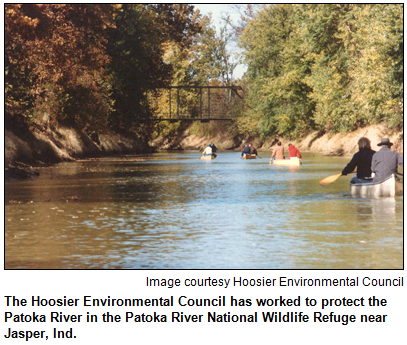 Our guest Tim Maloney, who was involved with the statewide campaign to protect the Hoosier National Forrest, will share details about how it unfolded. He also will share insights about various rivers in Indiana, including the White River and the Grand Calumet.
Our guest Tim Maloney, who was involved with the statewide campaign to protect the Hoosier National Forrest, will share details about how it unfolded. He also will share insights about various rivers in Indiana, including the White River and the Grand Calumet.
"We have a mixed record in Indiana," he says. "Throughout our history, we turned our backs on most of our waterways for many years. We saw them as sewers, with the result that they became badly contaminated."
Our guest Jesse Kharbanda is the son of immigrants from India. He grew up in St. Louis and studied economics at Oxford University in England, where he was a Rhodes Scholar.
Since moving to the Hoosier state, Jesse, 36, has helped lead a collaboration with the Greater Indianapolis Chamber of Commerce on pending legislation regarding public transit. In 2011, he was named by the Indianapolis Business Journal to its "40 Under 40" roster of rising young executives.
Here are some learn-more websites:
Roadtrip - You Are There 1904: Picture This!
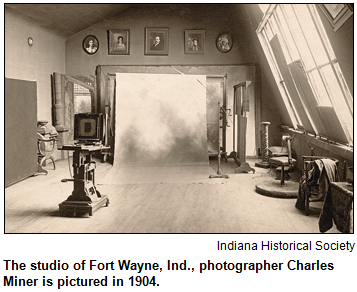 Guest Roadtripper Amy Lamb of the Indiana Historical Society suggests that you be one of the first to see You Are There 1904: Picture This!, which opens Oct. 29. She says visitors can step into the studio of photographer Charles Miner, who is busy conducting a normal day's business taking portraits of his Fort Wayne neighbors in 1904.
Guest Roadtripper Amy Lamb of the Indiana Historical Society suggests that you be one of the first to see You Are There 1904: Picture This!, which opens Oct. 29. She says visitors can step into the studio of photographer Charles Miner, who is busy conducting a normal day's business taking portraits of his Fort Wayne neighbors in 1904.
The Columbia City native turned Fort Wayne resident enjoyed a thriving business in the heart of Fort Wayne's downtown, where he participated in monumental moments in the lives of others.
Guests may also meet Miner's cousin/office manager, his technical assistant, or some Fort Wayne residents who may have visited the studio. And yes, Charles Miner really will take your photograph!
Amy also invites you to visit the IHS website after your visit to download your picture, play with the custom-made software, and morph your image into a vintage photograph to share with your friends and family.
The Eugene and Marilyn Glick Indiana History Center is located at 450 W. Ohio Street in downtown Indianapolis.
History Mystery
During the 1970s, an Indianapolis-based radio station drew widespread attention - and even astonishment - for sponsoring an annual raft race on the White River, then considered far from pristine. Popular among young listeners for playing a wide range of rock music, the radio station organized the raft race on a 2.5-mile section of the White River near the Broad Ripple area.
About 8,000 rafters each year participated in the race, which drew nearly 30,000 spectators to Broad Ripple Park and other areas along the course on the murky White River in the 1970s.
Question: What were the call letters of the radio station?
 The call-in number is (317) 788-3314. Please do not call into the show until you hear Nelson pose the question on the air, and please do not try to win the prize if you have won any other prize on WICR during the last two months.
The call-in number is (317) 788-3314. Please do not call into the show until you hear Nelson pose the question on the air, and please do not try to win the prize if you have won any other prize on WICR during the last two months.
The prize is a voucher for two tickets to an Indianapolis Chamber Orchestra 2013-14 Masterworks Concert (includes The Messiah as a choice), courtesy of the Indianapolis Chamber Orchestra, and admission for four to the Indiana Experience at the Indiana History Center, where you can experience the new Picture This:1904 exhibit, courtesy of the Indiana Historical Society.
Thanks to all of our wonderful prize partners, including the stalwart Visit Indy, and also to our own Nelson Price, who seems to have a never-ending wealth of ideas for this contest.
Last week's answer
By request, we are publishing the answer to last week's History Mystery, in case you didn't catch it on the air. The Oct. 19 History Mystery answer is: REV. JACQUELINE MEANS.
The issue of ordaining women as priests was highly controversial among Episcopalians during the 1970s. Some protesters gathered in front of All Saints, 1559 Central Ave., on New Year's Day 1977 when Jacqueline Means was ordained as the first woman Episcopal priest.
In the decades since her ordination, Rev. Means served for several years as the parish priest at St. Mark Episcopal Church in Plainfield and continued her work as a prison chaplain, including at the Indiana Women's Prison. She also served in administrative capacities with the Episcopalian Church's prison ministries.
Preservation at the Crossroads kicks off Oct. 29 in Indy
Susan West Montgomery, a senior director at the National Trust for Historic Preservation in Washington, D.C., will do a special call-in to the show to tell us about the trust's upcoming annual conference, which runs Oct. 29 through Nov. 2 in Indianapolis and nearby locales.
She'll tell us a bit about why the "Crossroads of America" is historically significant on a national level, and she will mention a couple of conference highlights.
Your Hoosier History Live! team,
Nelson Price, host and creative director
Molly Head, producer, (317) 927-9101
Richard Sullivan, webmaster and tech director
Pam Fraizer, graphic designer
Garry Chilluffo, creative consultant
Michele Goodrich, Jed Duvall, grant consultants
Joan Hostetler, photo historian
Dana Waddell, volunteer-at-large
www.hoosierhistorylive.org






Please tell our sponsors that you appreciate their support: Indiana Authors Award | Indiana Historical Society | Lucas Oil | Re/Max Metro | Story Inn | The Fountain Square Theatre Building

 Acknowledgments to Print Resources, Monomedia, Indiana Humanities, Visit Indy, WICR-FM, Fraizer Designs, Heritage Photo & Research Services, Derrick Lowhorn and many other individuals and organizations. We are an independently produced program and are self-supporting through organizational sponsorships, grants and through individual tax-deductible contributions through Indiana Humanities. We do not receive any government funding. Visit our website to learn how you can support us financially. Also, see our Twitter feed and our Facebook page for regular updates.
Acknowledgments to Print Resources, Monomedia, Indiana Humanities, Visit Indy, WICR-FM, Fraizer Designs, Heritage Photo & Research Services, Derrick Lowhorn and many other individuals and organizations. We are an independently produced program and are self-supporting through organizational sponsorships, grants and through individual tax-deductible contributions through Indiana Humanities. We do not receive any government funding. Visit our website to learn how you can support us financially. Also, see our Twitter feed and our Facebook page for regular updates.
Nov. 2 - encore presentation
Brazilian immigration with artist Artur Silva
 Join us for an encore broadcast of a program in our popular series about our ethnic heritage in Indiana. For this show about Brazilian immigration, Nelson's guest is Indianapolis-based artist, clothing designer and cultural organizer Artur Silva, one of several immigrants and visitors from his South American homeland who have been creating a splash on Hoosier soil. (The show's original air date was June 11, 2011 and is a half-hour program. The last half hour in our usual time slot has been pre-empted for U of I football.)
Join us for an encore broadcast of a program in our popular series about our ethnic heritage in Indiana. For this show about Brazilian immigration, Nelson's guest is Indianapolis-based artist, clothing designer and cultural organizer Artur Silva, one of several immigrants and visitors from his South American homeland who have been creating a splash on Hoosier soil. (The show's original air date was June 11, 2011 and is a half-hour program. The last half hour in our usual time slot has been pre-empted for U of I football.)
A recipient of the prestigious Efroymson Contemporary Arts Fellowship in 2010-11 and, more recently, of a creative renewal fellowship from the Arts Council of Indianapolis, Artur moved to Indy in 2001 after a few years in New York City.
 He has helped organize Indy Brazilian Carnaval, a festive celebration that has become an annual event in the Hoosier capital. His artwork has been exhibited at the Harrison Center for the Arts, the Indianapolis International Airport and the Fort Wayne Museum of Art. It also has been exhibited in galleries from Chicago and Los Angeles to the Netherlands and Brazil.
He has helped organize Indy Brazilian Carnaval, a festive celebration that has become an annual event in the Hoosier capital. His artwork has been exhibited at the Harrison Center for the Arts, the Indianapolis International Airport and the Fort Wayne Museum of Art. It also has been exhibited in galleries from Chicago and Los Angeles to the Netherlands and Brazil.
Artur, 37, is a native of Belo Horizonte City (translation: "beautiful horizon"), a city in southeastern Brazil that is surrounded by mountains. During our show, Artur discusses the wide range of reasons that native Brazilians have chosen to settle in Indiana.
Some fun facts:
- The high profile of Brazilian race drivers in the Indianapolis 500 has resulted in increasing enthusiasm for the sporting event in South America. Even casual race fans are familiar with three-time Indy 500 winner Helio Castroneves; the race last May was won by another native Brazilian, Tony Kanaan, who has become extremely popular among Hoosiers.
- The Indiana town of Brazil derives its name only indirectly from the country. According to folklore, the town took its name from a nearby farm called Brazil; the farm, in turn, had appropriated it because the country had been in the news frequently during the 1840s.
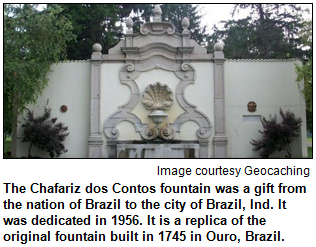 Even so, Forest Park in Brazil, Ind., features a large granite fountain that was a gift from the country; it's a replica of a historic fountain there.
Even so, Forest Park in Brazil, Ind., features a large granite fountain that was a gift from the country; it's a replica of a historic fountain there.- Artur's artwork is exhibited in The Alexander, the boutique hotel that opened in downtown Indy early this year. The hotel is named for Alexander Ralston, the surveyor who laid out the Hoosier capital in the 1820s. Nothing had been named in honor of the city's planner for more than 200 years. His life - and insights about the reasons Ralston assigned names to streets in the Mile Square - was the focus of a Hoosier History Live! show last February.
One more item: Here is video of Artur talking about art at the Alexander Hotel in downtown Indianapolis.
Next newsletter in two weeks!
By the way, as we are presenting an encore show on the air next week, our next enewsletter will be published on Nov. 8 to give our hard-working team a little break.
© 2013 Hoosier History Live! All rights reserved.